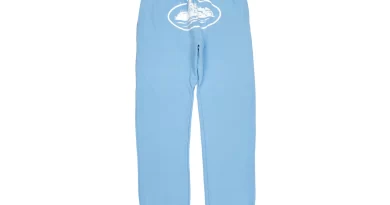The Evolution of Style: Unraveling the History of Hugo Boss Men’s Tracksuits
Introduction
In the dynamic world of fashion, few brands have left an indelible mark quite like Hugo Boss. Renowned for its sophistication and timeless elegance, Hugo Boss tracksuit has seamlessly blended luxury with sportswear, exemplified by its iconic range of men’s tracksuits. In this blog post, we’ll take a journey through time to explore the evolution and history of Hugo Boss tracksuits, tracing their inception to the present day.
The Genesis: Early Days and Inspiration (1940s-1970s)
The roots of Hugo Boss can be traced back to 1924 when the German brand was founded. However, it wasn’t until the post-war era that the brand gained prominence. Initially focused on manufacturing uniforms, Hugo Boss began diversifying its product line in the 1970s. The burgeoning athleisure trend served as inspiration for the brand to venture into sportswear, laying the foundation for the tracksuit revolution.
Rise to Prominence: 1980s-1990s
The 1980s marked a turning point for Hugo Boss as it transitioned from a primarily menswear brand to a global fashion powerhouse. The brand’s foray into athletic-inspired leisurewear was met with resounding success, and the tracksuit became a symbol of casual sophistication. During this era, mens tracksuit were characterized by sleek designs, bold logos, and a commitment to quality craftsmanship.
Iconic Collaborations and Celebrity Endorsements (2000s)
In the 2000s, Hugo Boss solidified its status as a fashion authority by collaborating with renowned designers and forging partnerships with influential celebrities. These collaborations injected a fresh and modern perspective into the tracksuit collection. Celebrity endorsements from athletes, musicians, and actors propelled Hugo Boss tracksuits into the spotlight, making them a coveted item among fashion enthusiasts.
Innovation and Technological Advancements (2010s)
Embracing the spirit of innovation, Hugo Boss continued to refine its tracksuit offerings in the 2010s. Technological advancements in fabric and design allowed for enhanced performance, comfort, and style. The incorporation of sustainable materials also reflected the brand’s commitment to environmental consciousness, catering to a new generation of conscientious consumers.
The Contemporary Era: 2020s and Beyond
In the present day, Hugo Boss tracksuits continue to be at the forefront of men’s fashion, seamlessly blending comfort and luxury. The contemporary collection pays homage to the brand’s heritage while embracing modern design elements. From slim-fit silhouettes to minimalist detailing, Hugo Boss remains a trendsetter in the ever-evolving world of menswear.
Conclusion
Hugo Boss tracksuits have transcended their athletic origins to become a symbol of sophistication and style. From humble beginnings rooted in post-war utilitarianism to the present-day fusion of luxury and leisure, the evolution of Hugo Boss tracksuits mirrors the brand’s commitment to innovation and timeless design. As we continue to witness the dynamic landscape of menswear, one can only anticipate what exciting developments Hugo Boss has in store for the future of its iconic tracksuit collection.



